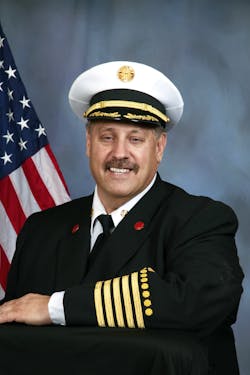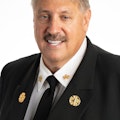If I could tell the future, I would probably first call to mind the Powerball numbers or those stocks that are going to soar in the coming year. Unfortunately, I cannot tell the future like that. But I have been a fire chief long enough to know that if I don’t have the money in my budget to operate a program, I cannot go out and print the money for it. And similarly, I know that community paramedic programs are going to fail unless they secure funding. With this in mind, I was not surprised to learn that the Mesa Fire and Medical Department in Arizona shut down its community paramedicine program when a $12.5 million federal grant ran out.
Alternative forms of care
On the surface, it makes sense to develop alternative EMS delivery care programs as a solution to the rising 9-1-1 call volume. In almost every community, EMS call volumes continue to increase as more people call 9-1-1 as a method of entering the healthcare system.
As I have written before, transporting every person who calls 9-1-1 in an ambulance to go to an emergency room, regardless of the chief complaint, makes as much sense as pressing harder on the remote-control button when the battery is dead. It doesn’t work! Taking the most expensive ride you can find to the most expensive level of care for a minor complaint is inefficient and a waste of resources.
In response to the rising number of calls, you can either add more personnel and ambulances or deal with those who call 9-1-1 for every sniffle. Many fire departments chose to put various programs in place to deal with the low-acuity calls or “frequent flyers.” This usually takes the form of implementing a treat-and-release approach, targeting frequent flyers before they call, directing them to another form of care when they call 9-1-1, or visiting them in the home after they have been released from the hospital to prevent readmission.
But delivering these alternative forms of care also takes money. I have repeatedly made the case that you need funding from your local hospital system, insurance companies, Accountable Care Organizations (ACOs) or some other institution if you want to fund such programs. There is no reason for fire departments to eat the cost of diverting patients away from care while insurance companies get richer. By doing so, government is subsidizing insurance companies. Delivering alternative prehospital care is not only the care, but also the funding, that is needed.
Mesa knew this, and when the funding from the federal government ran out for the community paramedic program, they shut it down. The bad part is that it was an excellent model. Not only did it target the low-acuity calls, but a specialized program targeted those with behavioral problems as well. Over the course of the three-year program, the Mesa Fire and Medical Department helped approximately 13,000 patients.
Missed opportunities
To change this entire paradigm, Medicare, Medicaid and private insurance companies need to stop limiting reimbursement for ambulance services only if the patient goes to an emergency room. They need to start reimbursing fire departments for treating and releasing patients, establishing programs to target frequent flyers, routing patients at the 9-1-1 center to clinics or care centers other than an emergency rooms, and checking on patients after discharge from a hospital to ensure they do not get readmitted. This includes paying for first response services.
The Affordable Care Act (aka Obamacare) and now the failed Republican attempt to repeal the ACA and replace it with their own healthcare bill called the American Health Care Act of 2017 (AHCA) were excellent opportunities to change how we provide medicine in the United States—opportunities to change EMS and create more efficient and economical models. But the ACA and the AHCA were not about reforming healthcare; they were about how to pay for healthcare. If they were serious about reforming healthcare, the emphasis would be on prevention and dealing with the healthcare of an individual before it becomes catastrophic and very expensive to manage.
In sum
I don’t have a crystal ball and I cannot see into the future, but I am smart enough to know that more and more community paramedic programs will fail unless they find the appropriate level of funding.
About the Author
Gary Ludwig
GARY LUDWIG has served in three fire departments over his career: St. Louis, Memphis, and Champaign, IL. His fire, EMS and rescue career spanned a total of 46 years, and he has been a paramedic for over 44 years. Ludwig served as president of the International Association of Fire Chiefs in 2019-20. He has a Master’s degree in Business and Management, has written over 500 articles for professional fire and EMS publications and is the author of seven books.
Connect with Gary
Email: [email protected]
Facebook: Gary Ludwig
Twitter: @ChiefGaryLudwig
Website: garyludwig.com

